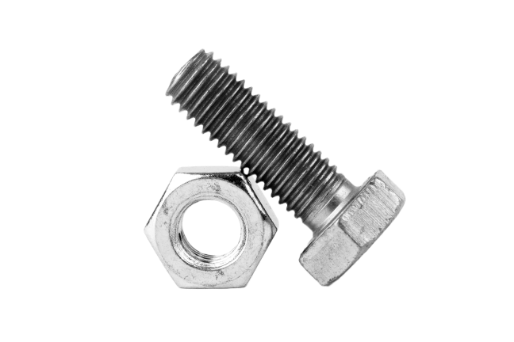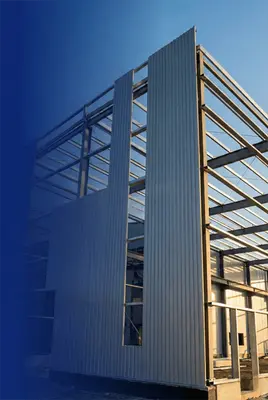
When working with metal construction or industrial fastening, flush installation plays an important role in ensuring structural efficiency and aesthetic consistency. Flat head screws offer a streamlined solution where traditional raised heads might interfere with surrounding surfaces. These screws are designed to sit level with the material or provide a low-profile finish, helping maintain smooth lines in metal assemblies.
Why Flat Head Screws Matter in Metal Construction
Despite the shared term “flat head,” there are numerous variations in geometry, function, and application. Some are true countersinking screws with conical heads. Others, like wafer and pancake designs, offer a flattened appearance without countersinking. Understanding each variation helps project managers, engineers, and installers select the right fastener for fastening to metal, HDPE, composites, frp etc.
13 Common Flat Head Screw Types for Metal
The following list includes 13 of the most commonly used flat head and low-profile head screws in metal assembly work:
1. Flat Head Machine Screws (82°, 90°, 100°)
Classic conical-head screws designed to seat flush in a countersunk hole. Ideal for tapped metal components and sheet assemblies.
2. Flat Undercut Head Screws
A lower-profile variation allowing greater thread depth in thin materials. Often used where countersink depth is limited.
3. 100° Flat Head Screws
A broader angle for increased surface bearing area—especially useful in thinner gauge metals that may deform under pressure.
4. Metric Flat Head Screws (90°)
Common in European or ISO-standardized assemblies requiring precision seating and consistent geometry.
5. Flat Head Self-Tapping Screws
Designed to create internal threads in metal substrates without pre-tapping. Best for lightweight framing or equipment housings.
6. Flat Head Self-Drilling Screws
Combine a drill point with countersinking ability to reduce installation steps in structural metal applications.
7. Flat Head Concrete Screws
Made for securing metal plates, HDPE, composites, frp etc. These hardened screws provide flush seating in concrete or block.
8. Flat Head Cap Screws
Typically high-strength fasteners with a socket or hex drive. Suitable for structural joints or machine assemblies.
9. Elevator and Plow Bolts
Feature a flat or domed head with a square neck to prevent rotation during tightening. Used in heavy equipment and wear applications.
10. Countersunk Trepan and Decorative Flat Heads
Applied where appearance matters, these fasteners offer a sleek finish with minimal surface disruption.
11. Flat Head with Integrated Washer or Flange
Used in HVAC and outdoor enclosures to create flush assemblies with enhanced sealing capability.
12. DIN/ISO-Specific Flat Heads (e.g., DIN 85, DIN 963, ISO 7046)
Identified by dimensional consistency and used across many precision or OEM assemblies in metal.
13. Pancake Head Screws
Extremely low-profile screws used where clearance is tight and countersinking isn’t possible. Frequently used in ducts, enclosures, and mechanical assemblies.
These styles cover a wide range of drive types (Phillips, Torx, hex socket), materials (carbon steel, stainless, and finishes such as zinc-coated, XL Coated etc.), and installation methods (manual, powered, self-drilling). Each variation supports flush or nearly flush seating depending on whether countersinking is possible or not.
FSI Flat Head and Low-Profile Screws
Fastener Systems Inc. (FSI) offers several low-profile screw types that meet the performance and appearance standards of flat head installations in metal-to-metal, HDPE, composites, frp etc settings. While not all FSI heads are conical countersunk styles, the following fasteners serve the same flush-fit function:
Self-Piercing Washer Screw (Carbon Steel)
This Clipfast Type 17 low-profile fastener is ideal for metal sheathing applications that require piercing capability without pre-drilling. FSI’s Self-Piercing Sealing Washer Carbon Steel screw combines drive speed with strong metal-to-metal hold.
Phillips Wafer Head Self-Drilling Screw
Designed for wide surface contact and minimal projection, this Tek 3 square drive fastener supports light-gauge metal assembly with clean, flush seating. The Self-Drilling Phillips Wafer Carbon Steel screw offers consistent seating on panels, channels, and secondary framing.
Self-Drilling Pancake Head Screw

With its broad, flattened head and low-clearance profile, this bi-metal screw is ideal for hidden fastening in interior panels and trim. FSI’s Self-Drilling Pancake Head fastener is engineered to sit nearly flush against exposed metal surfaces while maintaining secure attachment.
Alternate Spec: 8-18 Phillips Wafer Head Self-Drilling Screw
This version of the Tek 2 wafer head design accommodates deeper drives and varying material thickness. The alternate 8-18 Self-Drilling Phillips Wafer Carbon Steel screw supports consistent flush seating with longer point geometry for expanded applications.
Fastener Systems designs its products specifically for high-performance metal-to-metal fastening. Each screw is engineered to meet the structural, sealing, and installation demands of commercial and industrial metal assemblies.
Choosing the Right Flat Head Fastener
When selecting flat head screws for metal applications, installation method, material type, surface thickness, and environmental exposure all play a role.
- Conical flat heads are ideal when countersinking is available and a completely flush surface is required.
- Low-profile heads like wafers or pancake styles offer an excellent alternative in thin metal panels or locations with limited space for recessed drilling.
- For self-drilling applications, screw point type, coating, and head geometry determine long-term performance and assembly efficiency.
Fasteners must resist stripping, maintain alignment under torque, and protect against corrosion—especially in structural or weather-exposed assemblies.
Flat and Flush Fasteners: FSI Screws Designed for Metal-to-Metal Connections
Fastener Systems delivers a selection of low-profile and flat head screws engineered for flush seating, fast installation, and high-performance metal fastening. From self-drilling wafer heads to sealing washers and ultra-thin pancake styles, FSI fasteners deliver reliable performance for commercial and industrial construction.
Contact us today for more information.

